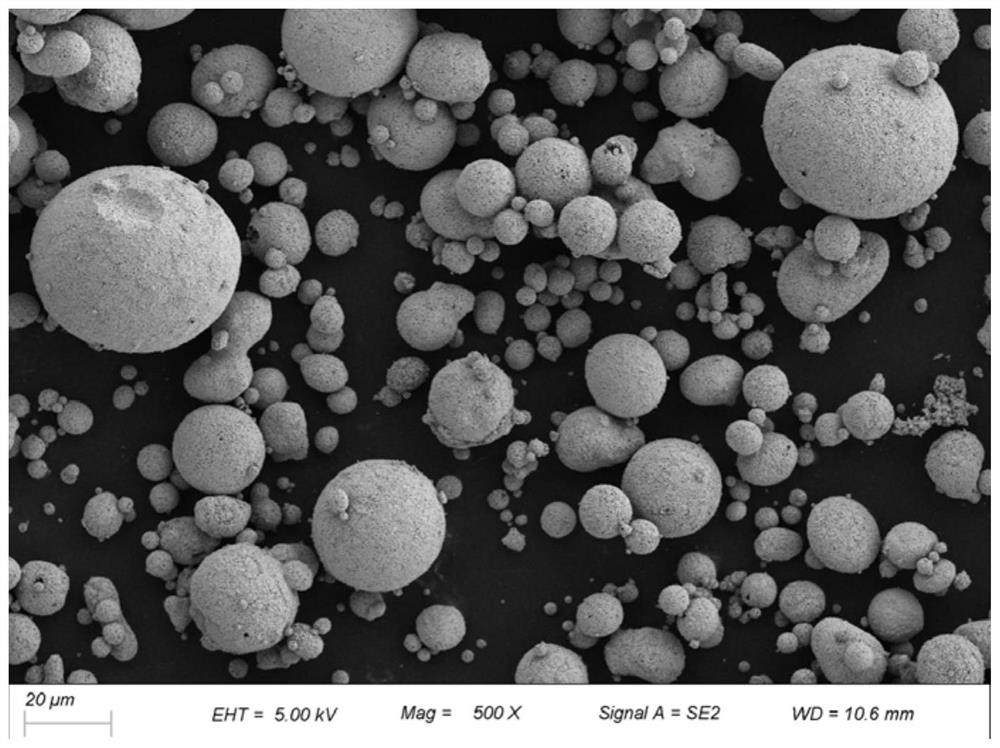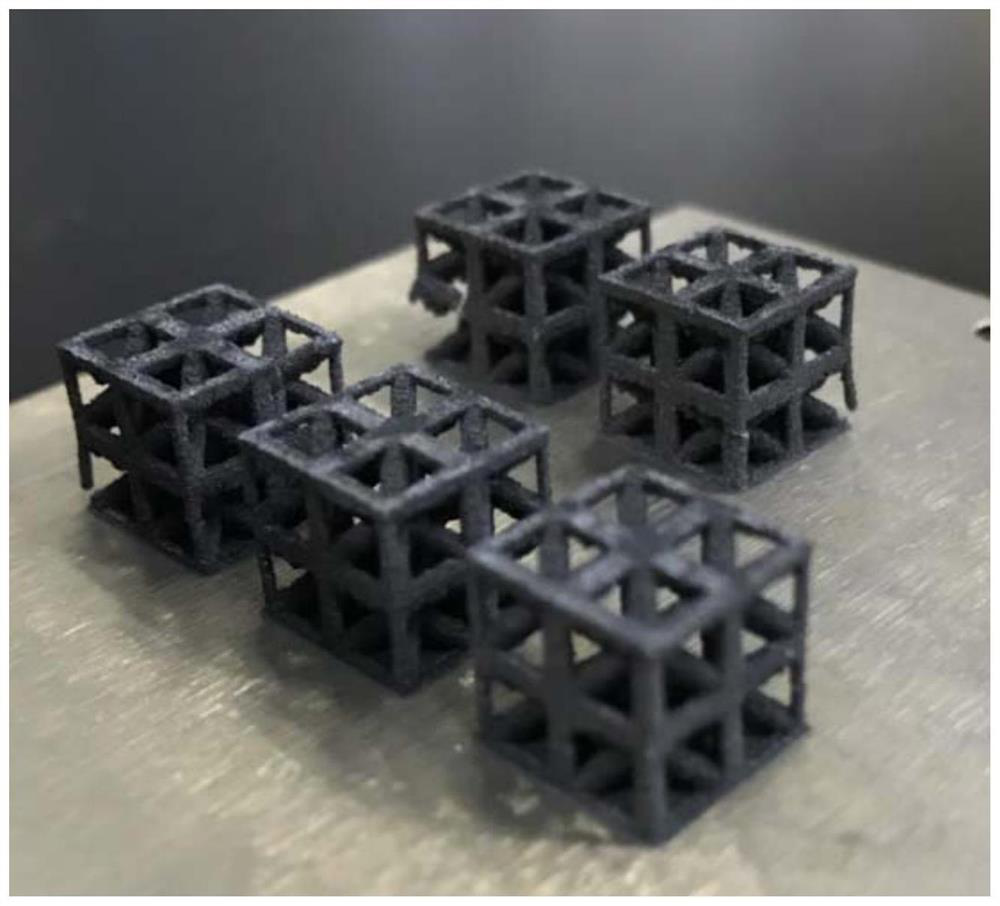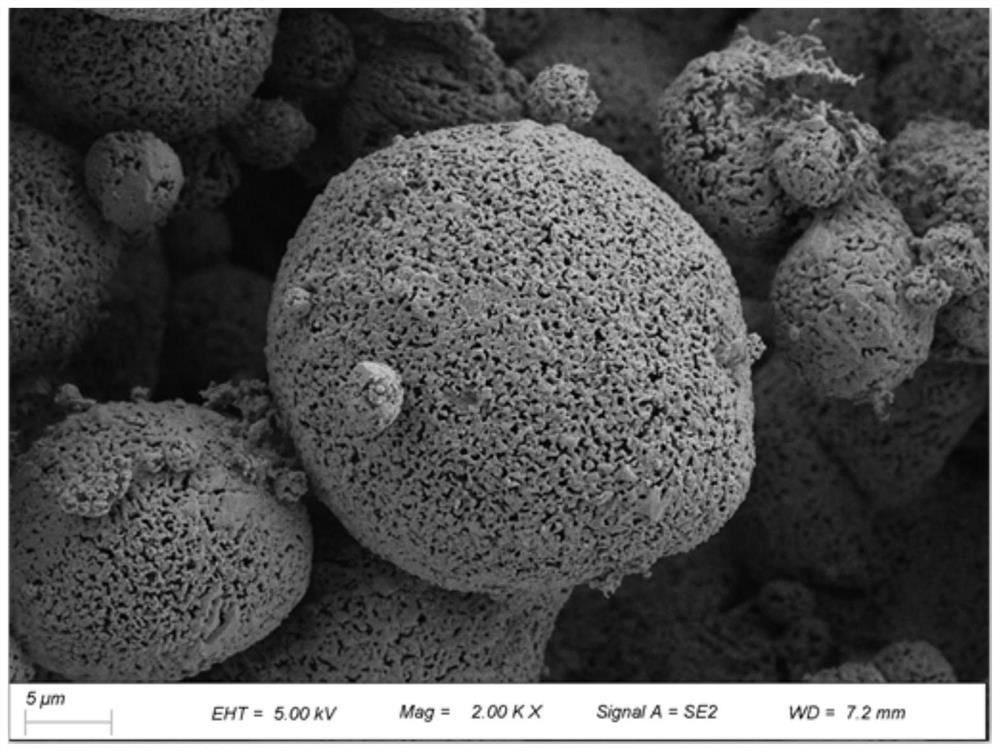Hydrogen production catalyst based on 3D printing dealloying process, preparation method and application
A 3D printing and dealloying technology, applied in metal/metal oxide/metal hydroxide catalysts, process efficiency improvement, chemical instruments and methods, etc. quality limitation and other problems, to achieve the effects of high methanol conversion efficiency, reduced carbon monoxide concentration, and reduced internal diffusion resistance
- Summary
- Abstract
- Description
- Claims
- Application Information
AI Technical Summary
Problems solved by technology
Method used
Image
Examples
Embodiment 1
[0041] Zn-70% Cu-29.5% Fe-0.5% (mass ratio) 3D printing de-alloy structure catalyst:
[0042] Preparing the raw material mass percentage component is divided into 70% zinc, 29.5% copper, 0.5% iron, and the alloy raw material is vacuum suspended melting, and the 3D printing spherical pre-gold powder is prepared with an aerosolization technique. The particle diameter is from 15-53 microns powder. The porous structure is designed to be a body-hearted cube array structure with a size of 8 × 8 mm, a unit size of 4 mm, a porosity of 60%. 3D printing, selective laser melting parameters: laser power is 400W, scanning speed is 800mms -1 The thickness of the paving is 0.05mm, the print result is like figure 2 Indicated. After printing, the porous structure skeleton is annealing, the annealing temperature is 400 degrees Celsius, when the annealing time is 1, the structure is stabilized, and the porous structure 70Zn29.5Cu0.5Fe skeleton is placed in 15% HCl to carry out the chemical deprive, ...
Embodiment 2
[0046] Preparation of Zn-80% Cu-19.8% Si-0.2% (mass ratio) 3D printing deprofold structure:
[0047] Preparing the material mass percentage component is divided into 80% zinc, 19.8% copper, 0.2% silicon, and the alloy raw material is vacuum arc smelting the alloy material, and 3D printing spherical pre-gold powder is prepared with aerosolization technology. The particle diameter is 53 to 105 microns powder. The porous structure is designed to facade, the size is 8 × 8 mm, the unit size is 4mm, and the porosity is 70%. Then 3D printing, selective laser melting parameters: laser power is 300W, the scanning speed is 900mms -1 The paving thickness was 0.05 mm. After printing, the porous structure skeleton is annealing, the annealing temperature is 350 degrees Celsius, when the annealing time is 2, the structure is stabilized, and the porous structure 80Zn19.8cu0.2si skeleton is placed in 20% nitric acid to carry out the chemical deprinted gold, the degrease gold temperature is 40 degr...
Embodiment 3
[0051] Preparation of Al-50% Cu-40% Zn-10% (mass ratio) 3D printed deraint structure catalyst:
[0052] Preparing the weight of the raw material mass is 50% aluminum, 40% copper, 10% zinc, and the alloy material is vacuum inductively smelted to obtain alloy materials, and 3D printing spherical preparation is prepared with aerosolization technology. The particle diameter is from 15-53 microns powder. The porous structure is designed to be intimate cube array structure, with a size of 8 × 8 mm, a unit size of 4 mm, a porosity of 50%. 3D printing, selective laser melting parameters: laser power is 800W, the scan speed is 1000mms -1 The paving thickness was 0.05 mm. After printing, the porous structure skeleton is annealing, the annealing temperature is 600 degrees Celsius, when the annealing time is 2, the structure is stabilized to place the porous structure 50Al40Cu10Zn skeleton in 15% KOH to carry out a chemical deprive, the release gold temperature is 25 degrees Celsius, time For...
PUM
| Property | Measurement | Unit |
|---|---|---|
| thickness | aaaaa | aaaaa |
| thickness | aaaaa | aaaaa |
| porosity | aaaaa | aaaaa |
Abstract
Description
Claims
Application Information
 Login to View More
Login to View More - R&D
- Intellectual Property
- Life Sciences
- Materials
- Tech Scout
- Unparalleled Data Quality
- Higher Quality Content
- 60% Fewer Hallucinations
Browse by: Latest US Patents, China's latest patents, Technical Efficacy Thesaurus, Application Domain, Technology Topic, Popular Technical Reports.
© 2025 PatSnap. All rights reserved.Legal|Privacy policy|Modern Slavery Act Transparency Statement|Sitemap|About US| Contact US: help@patsnap.com



